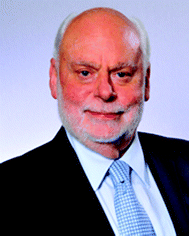Mechanical bonds and dynamic covalent bonds
Jishan
Wu
 *a and
J. Fraser
Stoddart
*a and
J. Fraser
Stoddart
 *b
*b
aDepartment of Chemistry, National University of Singapore, 3 Science Drive 3, 117543, Singapore. E-mail: chmwuj@nus.edu.sg
bDepartment of Chemistry, Northwestern University, 2145 Sheridan Road, Evanston, Illinois 60208, USA. E-mail: stoddart@northwestern.edu
Chemical bonding is one of the most basic fundamentals of chemistry, and determines the reactivity and physical properties of all kinds of chemical compounds. Traditional covalent bonds are kinetically stable and hard to break. However, dynamic covalent bonds have an intermediate bond dissociation energy, which allows chemical reactions to proceed reversibly and give the thermodynamically most stable products. In the past decades, various reversible reactions involving dynamic covalent bond formation and dissociation have been exploited to construct macrocycles, cages, knots, and 2D/3D covalent organic frameworks. The reactions include transition metal catalysed alkene/alkyne metathesis, acid/base-mediated condensation, Friedel–Crafts type alkylation, redox controlled S–S (or Se–Se) coupling/breaking, radical–radical association, and so on. These reactions have been successfully used for the template-directed synthesis of mechanically interlocked molecules such as catenanes, rotaxanes, and molecular knots. This new type of chemical bonding is named “mechanical bonding”, and is different from traditional covalent bonding, coordination bonding, and hydrogen bonding. Mechanically interlocked molecules have been exploited as promising materials for artificial muscles, molecular machines and molecular electronics. The 2016 Nobel Prize in Chemistry was awarded to three chemists in the area, including one of the guest editors (JFS).
This themed collection concentrates on recent efforts in the development of molecular structures and materials that are built with mechanical bonds and dynamic covalent bonds, including mechanically interlocked structures, molecular cages, covalent organic frameworks, responsive systems, etc. A total of 14 research articles are included and we would like to express our sincere gratitude to all the authors for their valuable contribution to this themed collection. Please enjoy reading.
| This journal is © the Partner Organisations 2020 |


